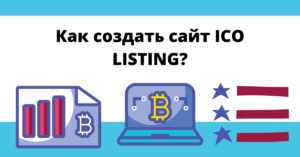Each site must have call to action... Calls to Action - CTA.
- How do you encourage users to act?
- How do you create an effective call to action?
Almost all websites have some form of call to action, from signing up for a newsletter to a summit. However, getting a user to complete a call-to-action is more difficult than it first appears. There are many factors in the game that you must consider.
Содержание | Быстрая навигация
Factors that influence why people buy.
Conversion optimization Is not only a design or a good proposal. It's about every aspect of your business from pricing to ways to launch sales. It requires a deep understanding of user behavior and psychology, as well as relentless site testing.
This is too much to cover in one article. But you can study this topic on my online master class. How to get users to follow through with your calls to action.
However, in this post, let's focus on optimizing copied design aspects. conversions.
For starters, users don't jump straight to a call to action in one step. Take, for example, an e-commerce site purchase that includes:
- Finding a need or need.
- Exploring options.
- Placing an order.
- Receiving delivery.
- After sales support.
An experience that often occurs over a long period and includes many site visits.
Now the user orders a product or service from 4 visits to the site or more
The result of this extensive journey is that it may be necessary to present users with different calls to action at different points in the journey.
For example, when investigating a purchase, we may invite users to subscribe to a newsletter so they don't forget us when it's time to place an order.
Likewise, after a user has placed an order, we want to clarify how to search for their order status in order to reduce our support costs.
However, there is another factor as well. Not all calls to action are created equal for live sites. An e-commerce site may want to nudge users towards a specific product that offers higher margins or sell additional items to increase the average order value.
All of this means that a well-designed website should do a lot more than offer a pretty button to click.
How then can we create compelling calls to action that motivate the user? This guide outlines all the critical factors affecting the effectiveness of your calls to action. Factors such as:
- The moment of your call to action.
- The quality of your proof copy.
- Design your calls to action.
- A postal call to action.
Let's start by considering when to make a call to action.
The moment of your call to action. CTA.
Understanding where a user is on their journey is critical to the success of a call to action. For example, asking them to subscribe to a newsletter when they are about to make a purchase is a dangerous distraction.
However, it makes sense to try them on their first visit before they are ready to make a decision.
It's important to be careful. PopUp newsletters at the moment when the user came to the site, will lead to a decrease in the speed of user actions. The user did not have time to look at the site to decide if he wants to register.

Choosing the right moment is not limited to signing up for the newsletter. Asking people to share content on social media or taking a survey is best done later, until the user completes their primary task.
There is also a good time to sell additional products. Asking users if they want to add batteries or some other accessory to an order makes sense at the shopping cart stage. It doesn't make sense to promote a completely different product category.
It all boils down to having a solid understanding of the user's journey. it achieved through customer journey mapping and user research... However, tagging people who visit the site with cookies can also help.
Storing related information about users in cookies that are cached on their computer can help us better customize our call-to-action times. For example, if the cookie does not exist, there is a high probability that the user is visiting the site for the first time.
- The first impression of the site is very important and it is not worth it to offer subscriptions at this moment.
- If a user has previously visited a specific part of your site, then a call to action should be associated with that.
- If a user has made a purchase in the last few days, then order tracking is worth highlighting.
- The list goes on.
However, cookies are not the only tool at our disposal to better target our calls to action.
We can also create calls to action based on where the user is on the site.
For example, when a user has just completed a purchase. Instead of showing him a “continue shopping” confirmation page, give him the option to subscribe to social media.
We can even tailor messages to the product that the user has just purchased. For example, if a user just bought a camera, the call to action might read, "Tips for getting the most out of your camera, subscribe to our newsletter."

Call to action text is one of the most important factors affecting conversions. This is why we must carefully consider the language we use.
Create short texts to improve conversion.
Whether we're trying to motivate people to sign up for a newsletter or buy a specific product, the text with that call to action is critical to conversions.
Unfortunately, the desire for improvement often leads to the fact that the texts are exaggerated. Ultimately, this undermines rather than improves conversions.
The credibility of advertising slogans.
There is a growing trend on the web for increasingly exaggerated slogans in an attempt to grab the attention of users. This kind of text, often called clickbaitthat undermines conversions in the long run.
While it is true that attention grabbing headlines do get attention, it comes at a cost if those headlines are not true.
Such copy undermines credibility, which is a crucial factor in conversion. If the company exaggerates, then users fear that the company will not be able to provide its products or services.

However, the text should be appealing. It must be balanced with keeping its promises.
Balance benefits with features.
For a long time, marketing has sold by focusing on product benefits, not features. Marketing today often emphasizes how the product will benefit the consumer, rather than listing features.
Focusing on benefits is a smart approach. It does not require the user to think about how these features benefit him.
For example, a company might set aside 12 hours of battery life for its laptop (feature). However, the consumer doesn't care how many hours the battery lasts. He cares if the computer crashes before he finishes using it (benefit). Therefore, traditional marketing claims that we should emphasize the advantage instead of this feature.
This approach is still used on the Internet, but some caution is required. Users often come to the site with a specific question and are looking for answers to this question.
If the question “how long does the battery last", There will be a vague promise that she" will work as long as you”, It will not satisfy the user.
It is imperative that the benefits and features are presented together on the website in order to have the best chance of converting.
Admittedly, this makes the text longer, but we should always prioritize clarity.
Clarity of the call to action is more important than brevity.
Experienced designers know that people don't read online. This is indeed the case. Instead, they tend to scan the text looking for key phrases that answer any questions about the product.
However, this does not mean that the text should be short. Instead, the content should be as long as necessary to explain all the details and no more. Users will stop scanning to read text if relevant.
Make the text structured to help the user scan the text. Use headings, subheadings, lists, quotes, and other typographic tools to break up large blocks of text and allow users to quickly identify parts of the text of interest.
However, avoid overly verbose text. Users will quickly lose patience if the text is repeated or does not answer their questions. Users have an unusually low tolerance for texts that "feel" an aggressive selling attempt. Once again, this tends to undermine confidence.
Set a credible tone.
Whatever the call to action is, it will almost certainly require a lot of trust from users.
- Make sure you keep your promise.
- Indicate that you will keep their data safe.
- Make sure you respect the boundaries of the agreement.
Building trust is an essential component in motivating a user to take action and is determined by many factors, not least the text we write.
The credibility of a text is not only about its veracity. This is also the tone of the voice. The text can appear manipulative, impersonal, or aggressively harassing a “sale”.
It is true that a certain language of texts tends to convert better. Using phrases that encourage action like “buy today" or "last chance”Will increase conversion. It is also true that emotionally charged language such as “Breakthrough","Super" or "Surprise"Tend to attract attention. However, if used without finesse, they can undermine the credibility of the site.
Even worse, the text on many sites lacks humanity. They often use phrases that no one will ever hear in everyday conversation.
This leaves the user with the impression that they are being asked to buy from a faceless corporation and not a passionate team of people.
Balancing persuasive writing with a human tone of voice is not always easy. This comes with practice and a lot of testing. As a rule, they tend to write in a personal, open and factual tone. As users become more sophisticated and knowledgeable about “manipulative»Methods, sites are moving towards a more honest and human approach.
Text isn't the only thing that matters when creating compelling calls to action. Design also plays an important role.
Design principles for improved calls to action.
High cognitive load negatively affects user actions. They overlook critical visual cues on your site. If users are in a rush or distracted while trying to use a website, they can easily miss a call to action.
How can we optimize our calls to action so that they are immediately obvious to even the most congested user?
Six methods to optimize your calls to action.
Let's start with positioning.
1. Optimizing the positioning of the call to action.
Positioning your call to action correctly can have a significant impact on visibility and, in turn, conversions.
However, positioning is not just a matter of a call to action high on the page. There are other factors to consider as well.
One of the important factors is how users crawl the page. In countries where users read from top to bottom and left to right, people start at the top left corner and scan the left side of the page. When something catches their attention, they scan the page horizontally.
This scanning approach favors the left side of the page over the right. This means that a call to action is often performed better on the left, even if it is lower on the page.
Another factor that will improve conversion optimization is the positioning of the call to action in the central content area. This is because this is where the user's attention is focused. Users are interested in the content of a page and therefore pay significantly more attention to it than headers, footers or sidebars.
A call to action placed in the body text of a page often trumps the same call to action in the headline or high on the sidebar, even if the call to action is lower on the page.
In fact, in some situations, it is preferable to place the call to action lower on the page. As discussed in the “pick a moment” section, the timing of asking users to take action can have a significant impact on conversions.
In some situations, this need to choose the right moment can mean waiting until the user has viewed some pages before prompting them to act.
Signing up for a blog newsletter is a great example of this. If you post a call to action at the top of the page, the user may not have seen any content to judge if they want to subscribe. Waiting for them to read at least part of the page makes sense.
Developing the optimal vertical position for your call to action is not easy. Too high and the user may not be ready to respond, but equally there is no guarantee that the user will scroll the entire page. In truth, users often go all the way, but they tend to skip content in the middle.
Best optimization of this problem - run some software on the site and analyze the heat map.
Heatmap analysis will provide answers to how many users are scrolling to the bottom of the page and where their attention lingers. This is important because other factors can also influence where our attention is focused, not just the scroll position.
A place for a call to action does not exist in isolation. Other elements on the page have a big impact on this. Surrounding text, video, or stylistic elements will draw attention to the call to action, or vice versa.
We can see this most clearly in relation to the call to action and images.
2. Use graphics with caution in your calls to action.

Images are much more convenient for people than text. As a result, photographs and illustrations unconsciously grab our attention. The picture draws even more attention if the image contains people, and in particular faces. We are programmed to pay special attention to faces, and therefore, when we go to a page, we tend to go directly to the face.
The power with which images attract attention can be both beneficial and detrimental to conversion rates.
For example, if you closely associate an image with a call to action, it increases its visibility and therefore improves the conversion. However, if there is a gap between the image and the call to action, the user's eye will often jump directly to the image, ignoring the call to action.
The power of images to grab attention is so powerful that if you place your call-to-action in the prominent left column and the image in the smaller right column, your gaze will move to the right to focus on the image.
The obvious takeaway is to tightly link imagery to a call to action. However, there is one more factor in the game and it also needs to be considered. This is the content of the image.
Visual cues in the image itself can either grab the user's attention or divert from a call to action.
For example, if the image contains a person, then the gaze will tend to follow the line of that person's eyes.
If a person looks in the direction of a call to action, then the user will also look there. If the person looks away from the call to action, the chances of a decrease in conversions increase.
However, this applies not only to photographs of people. This also applies to any element of the image that indicates a direction. It can be as obvious as pointing to an arrow, or as subtle as some architectural detail that draws the eye in a specific direction.
This helps to perceive the images as the user's gravitational pull.
The idea of using screen elements to grab the user's attention is also helpful when considering free space.
3. Optimize free space.
When it comes to the importance of a call to action, the absence of competing elements is as powerful as a well thought out call to action itself.
Users often spend less than eight seconds evaluating a page. This limited focus means that every element on the page potentially distracts from the call to action.
One answer is to dramatically reduce the number of screen elements on a page, and this will really improve conversions.
An alternative approach maximizes the amount of space immediately around the call to action.
A distraction minimization approach will inevitably improve conversions even with a relatively weak call to action. However, raising the profile of the call to action itself is always beneficial.
4. The size of the call matters.
The obvious benefit of creating big, bold calls to action cannot be overstated. Size has a significant impact on visibility and conversion rates. A subtle design approach is rarely helpful in this regard.
However, the size is not just attractive. A massive call to action also offers added value. This allows for more compelling messages.
Take, for example, the Buy Now button for a game controller. The messages on these buttons are usually short because the available area limits them.
However, if the button is enlarged, then the slogan “buy now to be the best player". The extra space allows you to write a significantly more compelling call to action.
It is, of course, entirely possible to include this additional information in the accompanying ad copy. However, users rarely read additional posts.
By associating a message with the button itself, it ensures that users see it.
Size isn't the only way to get attention. We can also use color.
5. Contrasting colors in the CTA.
You can use color to draw attention to a call to action by contrasting the color of that call to action with the rest of your website.
For example, if the prevailing color scheme of a website is blue, then using a different color will help make the call to action stand out.
There is a lot of controversy about which color should be used to optimize conversions.
In truth, there are many factors, including cultural differences, that affect how people react to color. For example, red reduces conversions in many Western countries due to its hazardous association. However, in China, red is associated with prosperity and good fortune, which leads to a completely different reaction.
However, one constant is that using a contrasting color will have the greatest visual impact. In other words, try picking a color on the opposite side of the color wheel from the site's main color.
The only danger when using color to draw attention to a call to action is that we don't all see color the same way. Therefore, it is advisable to use color along with other methods such as using animation to attract attention.
6. Application of animation.
Animation is a powerful tool for grabbing the user's attention when used carefully.
In a static environment on a website's web page, we are programmed to notice even the most subtle movements. Simply put, movement grabs our attention.
However, just like images, animation can be a dangerous tool if misused. Continuous animation loops can be distracting, preventing users from focusing on other messages.
Overuse of animation can drastically reduce website performance.
It's best to use animation as salt. Avoid looping the animation, but instead run it on load or when users scroll. If it does a loop, make sure there is a large gap between the loops.
No method can significantly increase conversions. Combining methods can dramatically increase the visibility of your calls to action and therefore your site's conversions.
It's important that we don't focus solely on rewarding actions. We also need to think carefully about what happens when users click.
CTA bounces.
Anyone with an e-commerce site is familiar with the failure that inevitably occurs. For example, when a user adds a product to their cart or when they start the checkout process.
A user expressing interest in completing a call to action is not a guarantee of conversion.
Therefore, it is imperative that you carefully consider user experience after clicking. In particular, four factors require attention. However, the most important one is eliminating distractions.
1. Remove everything that distracts the user.
There are good reasons for Amazon's decision to remove all unnecessary UI elements as soon as the user starts the checkout process.
At this critical point in the conversion funnel, users can easily get distracted, so it's important to keep them fully focused on completing the process.
It's tempting to use your shopping cart to sell additional products or add a newsletter subscription. However, each of these elements adds a different choice, increasing the cognitive load and increasing the likelihood that they will abandon the process.
Any screen element not directly related to the completion of the conversion process increases the cognitive load on users. Separately, these add-ons have little impact, but collectively they add up, increasing the likelihood that the user will give up.
This is especially true when you are trying to reach an audience that is already under pressure from other sources, such as a family distraction, or when there are competing websites just a click away.
Not that you can always take all the complexity out of the process. This is where positive reinforcement becomes necessary.
2. Proactive sequence of correct steps.
One of the powerful tools for encouraging users to complete the conversion process is making sure they are doing the right thing. Once a user clicks on a call to action, it's important to confirm or reward that it's the right move.
People have a strong psychological need to conform to past actions. In other words, if they are committed to a process, they feel the need to follow that process to completion. By acknowledging that the user has started the process, they are more likely to end it as a result.
Secondly, buying is usually a very stressful moment for users, especially when it comes to making a financial purchase. They feel the emotional impact of parting with pay twice as much as the positive feelings associated with making a purchase.
We must compensate for this loss bias by reassuring users that they made the right choice and that buying is the right decision.
3. Create a sense of positive progression.
Completing the purchase process can take many steps. You may be required to provide detailed personal and financial information or select different product configuration options.
In any case, this kind of difficulty increases cognitive stress and the likelihood that the user will abandon the process, even after reducing the required steps to a minimum. Users are more likely to complete the checkout if they feel a boost.
In other words, they feel they are making positive progress towards the ultimate goal.
It is vital to reassure the user every step of the way.
Don't wait for the user to submit the form to validate it and report bugs. Instead, give positive signals as they enter each form field.
Give them an idea of how far they have come.
In short, you need to constantly communicate with users to give them a sense of progress.
This principle of continuous communication applies even after they have reached the end of the sales funnel.
4. Communicate constantly during delivery.
Even after the purchase process has been completed, there is a danger that the user will abandon the order. There is often a delay in delivery and people get cold to buy.
We can reduce the likelihood of a refund by communicating regularly with the customer during this vulnerable period. Such communication should provide a loyal attitude, but more importantly, a sense of control.
Anxiety is created by making any purchase. Our natural response to anxiety is to control the situation. However, when we are passive players, just waiting for delivery, we do not have that opportunity and therefore our anxiety grows.
We can create this sense of control by providing users with information about what is happening and this reduces their anxiety.
This principle is clear if we read the comments associated with any Kickstarter campaign. These campaigns require the user to wait a long time for their product to arrive, which is a concern. As a result, constant comments require updates. Communication reduces anxiety.
As seen, communication is just one of many techniques and principles that will help increase the conversion rate of any website.
However, it is the details of their implementation that dictate success or failure. Which approach best addresses these implementation nuances will depend on the audience. This is why understanding your audience is so important.
However, the only real way to understand how users will react is by tracking results through A / B testing.
Frequently asked Questions. FAQ.
✓ What is Clickbait?
Any information on the Internet for the purpose of getting clicks. Clickbait is used as a negative term when the click-through does not meet expectations.
✓ What is Cognitive Load?
Cognitive load is the mental strain required to accomplish any task. With an intuitive website design, the cognitive load is minimal.
✓ How does animation affect sales?
Use animation only on user transitions. Animation on pages is negatively affected.
✓ What does a heatmap site show?
The heatmap of the site shows where the user's attention is focused and where they clicked.
✓ What does the call to action indicate?
A call to action (CTA) is an invitation on a website that prompts the user to take a specific action. A call to action is usually written as a command or action phrase, such as “Register” or “Buy Now,” and usually takes the form of a button or hyperlink.
✓ How to Increase CTR with Better CTA Designs
Make your point of view crystal clear.
Avoid vague language that can be misleading or lacking in appeal.
Make your call to action look "interactive".
Align your copy of the call to action with the copy on the landing page.
Make sure your CTA stands out.
Use numbers.
Include a review.
Build location-specific versions.
✓ How to create a good call to action?
Use a strong commanding verb to start your call to action. In addition, it should be clear and concise. You don't have enough room in your ad to get your message across to 35 characters per description line, so it's important to get straight to the point.





1 thought on “Оптимизация призыва к действию. CTA.”